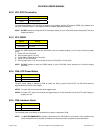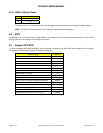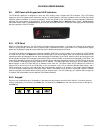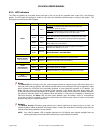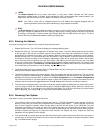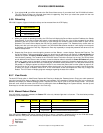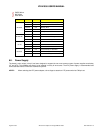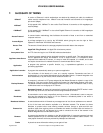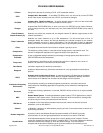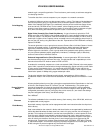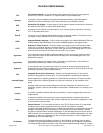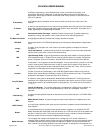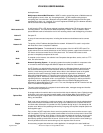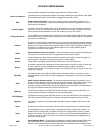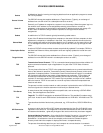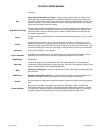VR-N100U USERS MANUAL
Page 89 of 98 All Items Are Subject To Change Without Notice Feb. 2004 Rev 1.0
CD burn
Slang for the process of recording a CD-R, a CD-recordable medium.
CD-R
Compact Disc Recordable - A recordable CD-ROM, which can be read by normal CD-ROM
drives. Data can be recorded once onto a CD-R, and cannot be changed.
CD-ROM
Compact Disc, Read Only Memory - An optical storage medium in disc form that comes with
data already encoded on it in a laser-generated continuous spiral.
Changer
A specialized CD/DVD-ROM drive in which more than one CD/DVD can be loaded. However,
since a changer has only one read-head, only one of the loaded CD/DVD-ROMs can be read at
one time.
Class C Network
Internet Protocol (IP)
Networks are divided into classes and are assigned Internet IP address ranges based on their
network classification.
Class C Networks
Networks are small networks of up to 256 workstations. The first three bytes of their IP
addresses identify the network, the last byte identifies the individual computer on the network.
Class B networks are found in larger organizations. The first two bytes of their IP addresses
identify the network, and the last two bytes identify each of up to 64,000 individual workstations.
Client
A computer that uses the services of another computer, typically a server.
Compression
The temporary coding of data in a way that saves storage space or transmission time. The
amount of compression depends on the type and content of the specific file.
Compression
Threshold
A user-configurable setting that defines a percentage of storage space saved above which a
CD/DVD-ROM should be compressed.
Daisy-chain
A configuration in which devices are connected to each other in sequence, like a chain of
daisies. The last device in the chain must be terminated.
Data Packet
Information organized into blocks for transmission.
Datagram
A packet of data and delivery information delivered over a non-guaranteed communications
protocol.
DHCP
Dynamic Host Configuration Protocol - A method of assigning IP addresses to computers
connected to a local area network (LAN). When a computer requests an address, the DHCP
server selects an IP address from a master list and assigns it to the requestor.
Distributed Computing
Environment
An architecture consisting of standard programming interfaces, conventions and server
functionalities for distributing applications transparently across networks of heterogeneous
computers.
Dismount
The process of taking a published, or mounted, CD/DVDs off-line so that it is no longer available
to users.
DNS
Domain Name System - A distributed database system used by TCP/IP applications to map IP
addresses to their system names. The acronym refers both to the convention for naming hosts
and to the way the names are handled across the Internet.
DNS Server
A computer on the Internet that translates Internet domain names into Internet numerical
addresses, such as 192.186.24.2.
Domain
In Windows, a domain is an administrative grouping of hosts. In the Internet world, a domain is a
host-naming convention.
Domain Integration
A process in which the Windows Domain becomes available to VR-N100U to provide
synchronization of user and group authentication and access on a secure VR-N100U.
Domain Name
A dot-separated sequence of text strings which uniquely identify a host computer. Domain
names are issued by the National Science Foundation (NSF). The Domain Names have different
extensions based on the category in which the domain belongs: .com & commercial
enterprise.edu & educational institution.gov & government body.mil & the military.net & a



